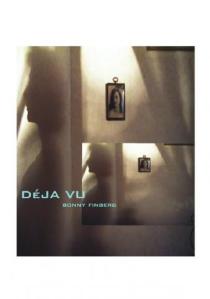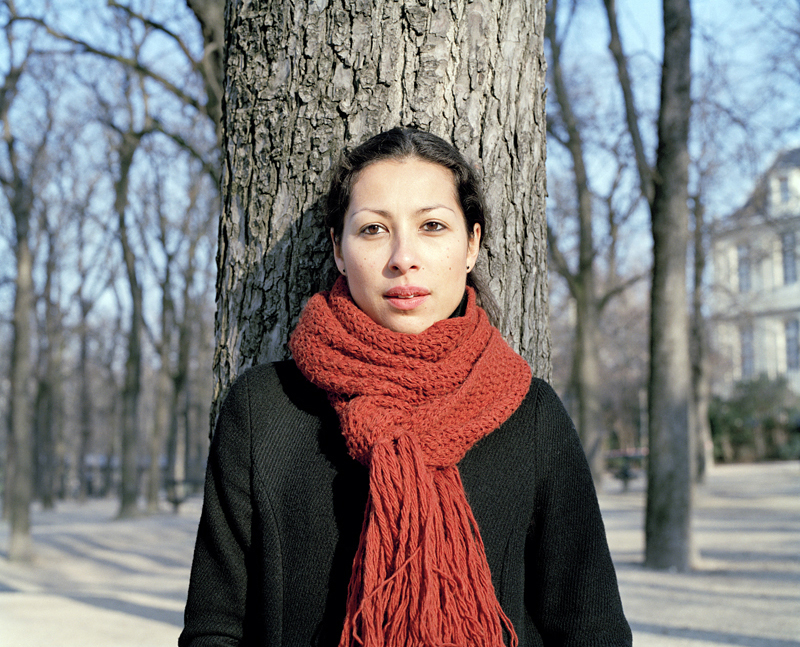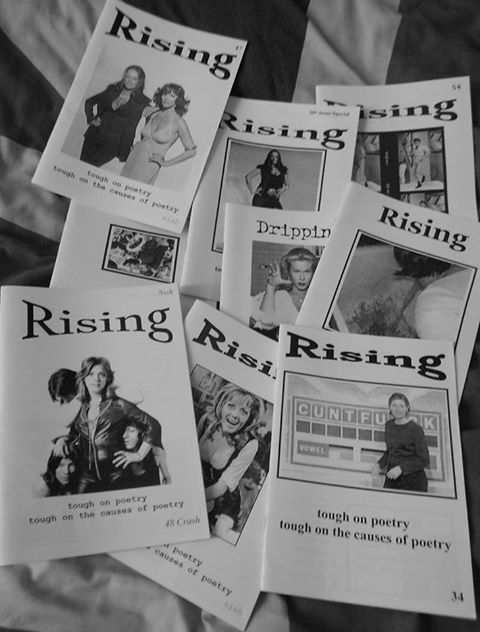‘Déja Vu’ by Bonny Finberg
-Reviewed by Lindsey Holland–
I’m always interested when I hear of new poetry from a writer who’s actively involved in other art forms. As such, I was intrigued when Bonny Finberg’s first pamphlet, Déjà Vu, arrived through my letterbox.
Finberg’s previous publications include photography as well as fiction, reviews and poetry, and her diverse creative interests are immediately evident in Déjà Vu. Surrealist photographs accompany each of the poems, but these are not visual art poems – the images and text never overlap but rather sit side by side, informing one another and synchronistically creating a dialogue with the reader. Nor are they ekphrastic poems that are born in response to a piece of art. Instead, the visual and textual seem to have grown and developed concurrently.
Cityscapes and flowers, bodies and landscapes, light and darkness are recurring images in Finberg’s poems and photographic art. Both are fragmented, with apparently unrelated images vying for our attention. But Finberg’s poetry is not extremely abstract or experimental. There’s a strong sense of logic and coherence throughout.
The opening lines of the first poem, ‘Topophilia’, set the tone for much of the pamphlet.
‘Blood, a loosely textured fugue,
a laughing bird behind the monkey’s chant,
travellers groan along the track
where plastic bags and gold
are trampled on the slushy cobblestones.
It never ends until it stops,
and all that follows, follows in a steady rain
of living dead,
no longer loved,
no longer streets,
emptied of their last drops.’
Above the text of the poem, there’s a surrealist image in which a street, a park, purple flowers, a giraffe and Tower Bridge merge together. It’s bright and seems to represent the power of living things. But there’s also a visceral darkness to this poem; it’s a quality that’s discernable, barely beneath the surface, in the rest of the poems. At times it breaks through – there were moments when I felt confronted by something horrific but slippery, like glimpsing for the first time an unpleasant truth about the human condition.
It’s an effect that gathers impetus in the later poems.
The pamphlet is structured around a central prose poem, ‘A Novel in 24 Chapters’. This reads like a brief synopsis for a novel, each chapter being numbered and described in no more than three lines. We’re told about the experiences and events in the life of an unnamed female protagonist. It opens with the line ‘Any place you hang your hat is your home, but she didn’t own a hat’, weaves us through encounters with ‘lemons’, ‘islands lost at sea’, ‘monster nuns’ and ‘abandoned fleas in rickety boats’ before dealing the final blow with ‘In the end, access to her life was terminated’. It’s more than a quirky fictional narrative. In the context of the other poems, it becomes a poignant story of an ultimately fruitless struggle through life. The accompanying image, of dying sunsets blended with, again, the purple flowers, reinforces these contrasts: life and inevitable death, vivid colour and darkness, momentary beauty and the repetitive, unfeeling natural world.
If I have anything negative to say, it’s that the second half of the pamphlet is stronger than the first. The poems become increasingly powerful and this is partly a result of connections accumulating and referencing one another. The early poems perhaps dwell for a little too long in the abstract.
One of the strongest qualities of Finberg’s poems is the way in which they create a sense of unease. Nothing is settled. The ‘I’ of the poems drifts between solid experiences of the present moment and broken, unreliable memories.
The title poem, ‘Déjà Vu’, is perhaps my favourite. It’s also one of the shortest and as such I won’t quote it here; taken out of context it’s unlikely to have the same emotive effect as it did when I first read it. What I will say is that it involves poppies, a childhood self and a mother. The poem itself is a snapshot: a brief memory, beautifully and hauntingly described. For me, it’s in this poem that the self is most evident, and that the root cause of the other poems’ pain is most tangible.
If life, death, memory, the passage of time, and ideas about home and place are central themes, there are also many subthemes, all of which are handled subtly by Finberg and without sentimentality. Religion, language, the body and servitude are all explored and each is worthy of more attention than I can give it here. But there’s an overriding sense that these are poems about a search for true meaning in a chaotic world, and about the impossibility of putting personal experience into words. The irony is that Finberg has done a particularly good job of doing just that. Her ability to express abstract concepts by combining them with solid objects marks her out as a poet of considerable power. It’s evident in ‘Countries of the Dead’ when she writes:
‘Testimony radiates through memory.
Perspectives blur.
Where is the subject?
Where is the object?
One face, garish colours of a xerox,
red lipstick, and I can’t remember
the color of her shirt,
or if it were a dress,
only the faceless hand around her shoulder,
anticipation of that hand?’
I’m reminded of Plath, Shapcott and Selima Hill. There are similarities to experimental poets; Emily Critchley comes to mind. But there’s also a considerable freshness to Finberg’s work, particularly when her use of photographic art is taken into account. She is, I’m sure, a poet we’ll be reading much more from in the future. I strongly recommend buying this pamphlet.




